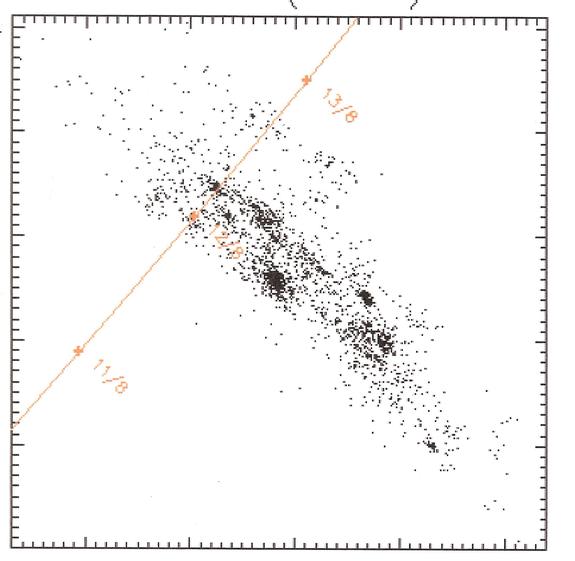Help! The Perseids Are Coming . . .
The annual Perseid meteor shower is upon us, and this year’s display has been predicted to produce an outburst of over 200 visible meteors per hour at its peak. The peak time should be around 1 am EDT on Friday, August 12, so skywatchers in the Eastern US may have an advantageous opportunity for a rare treat.
Of course everyone with clear dark skies can expect to see at least the usual amount of Perseids, perhaps 50-60 per hour, by simply looking up from about 1 am until dawn on Friday morning. No telescopes, binoculars, or sky maps required, just look up!

The Perseid meteors are actually cast off particles from comet Swift-Tuttle. Each year around this time the Earth’s orbit intersects the orbital path of Swift-Tuttle and Earth’s gravity draws the particles into its atmosphere like a giant vacuum cleaner.
In the adjacent diagram, French astronomer Jeremie Vaubaillon has plotted a graph of the particle densities for Swift-Tuttle. The orange line represents Earth’s orbital path through zones of greater and lesser density around August 12. Now think about this:
As we’ve said, the Earth’s orbital path intersects the orbital path of Swift-Tuttle, resulting in a lovely display of meteors every year – but did you realize that sooner or later the Earth and 16 mile wide comet Swift-Tuttle might reach that intersection point at exactly the same time? For this reason, author Gerrit Verschuur, in his book, Impact! The Threat of Comets and Asteroids, has declared comet Swift-Tuttle to be:
“The most dangerous object
known to humanity.”
A potential impact in the year 2126 was once predicted, however, more recent calculations have ruled this unlikely. But mark the date September 15, 4479 on your calendar now – that’s going to be a close one.
To learn more about comet Swift-Tuttle and the Perseids, and to learn about how you might be able to observe the meteors even if you don’t have clear dark skies at your location on Friday, check out our much more detailed article by clicking here.
